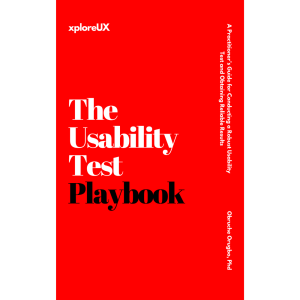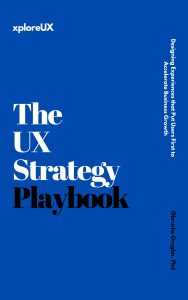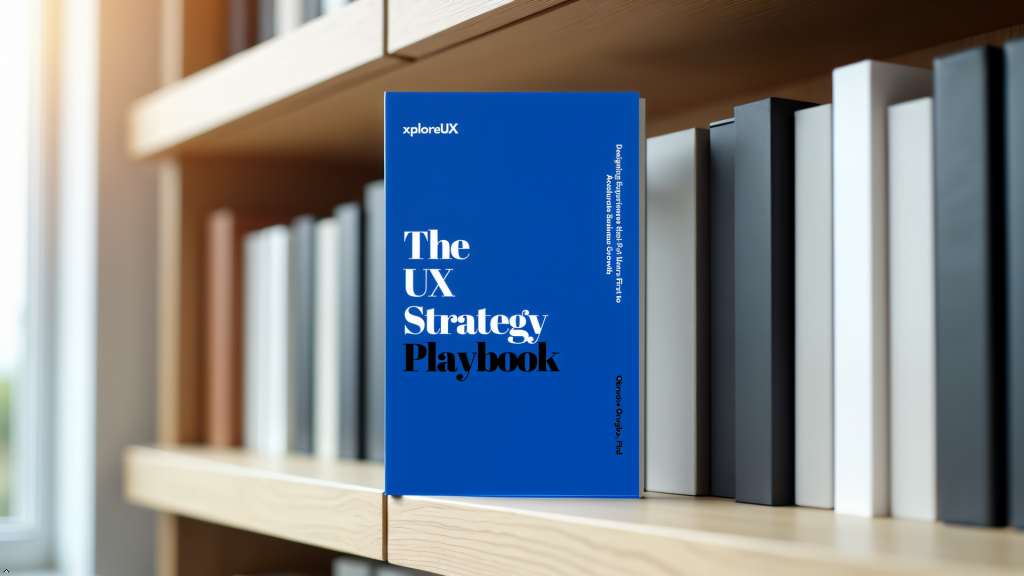
Advanced UX Research has taken on a pivotal role in shaping digital experiences for banking and investment services. Many organisations now recognise that product success hinges on how effectively they meet customers’ evolving demands and preferences. By leveraging Advanced UX Research, financial services can tailor online and mobile platforms to satisfy specific user needs, ensuring that processes such as loan applications, fund transfers, and portfolio management feel intuitive rather than cumbersome. This emphasis on usability helps firms stand out from competitors, allowing them to cultivate trust while simultaneously increasing user engagement.
Professionals involved in designing applications and websites for financial institutions must consider varied behavioural factors. From how quickly a user can locate key functions, to whether they can seamlessly navigate complex features, each interaction defines public perception of a service. The ability to gather data through observational studies, surveys, and interviews provides invaluable insights into how users think, act, and respond to different interface elements. Advanced UX Research methods prioritise genuine user feedback, reinforcing the idea that product decisions should be guided by actual consumer behaviour. In this way, financial brands can create compelling digital journeys that empower both novices and experienced clients to manage and grow their assets with greater confidence and minimal frustration.
Financial services typically deal with complex data, multiple product offerings, and stringent security protocols. These factors can discourage some from fully utilising online or mobile platforms, particularly if they feel overwhelmed at any point. By applying Advanced UX Research to study the factors shaping user decisions, financial services gain a better awareness of which parts of their systems need refinement. Certain users might, for instance, hesitate to complete registration forms if they sense any ambiguity about data sharing. Through rigorous testing, this hesitancy can be identified, leading to clarified messaging, simplified input fields, and overall improvements in the sign-up process.
Engaging with consumers through targeted focus groups or one-to-one interviews enables companies to discover the pain points within each step of an online journey. These sessions can also shed light on how customers perceive risk and reassurance when dealing with sensitive transactions. Advanced UX Research makes it easier to gather both quantitative metrics—like drop-off rates on certain webpages—and qualitative insights—such as emotional responses to security prompts. By blending these findings, firms can transform abstract metrics into focused strategies, ensuring that every new feature and interface addition is truly relevant. Ultimately, understanding user behaviour equips financial services with the knowledge needed to optimise digital channels and strengthen client satisfaction.
Crafting a robust user experience strategy hinges on striking the right balance between qualitative feedback and quantitative data. Advanced UX Research offers a framework for merging in-depth user interviews, usability tests, and observational studies with broader metrics gathered through analytics platforms. For instance, direct engagement with users can reveal that many find a checkout stage confusing, while numerical evidence might confirm that most users abandon the process at the very same point. By combining these perspectives, teams can prioritise their development work on the aspects that truly matter.
The financial sector can benefit from employing sophisticated tracking tools within online platforms. These may capture where users click, how long they remain on particular pages, or what they search for most frequently. Advanced UX Research then allows specialists to interpret these patterns to uncover underlying reasons behind certain actions. Perhaps users struggle to locate help information during loan applications, or they fail to notice beneficial features buried at the bottom of a dashboard. By complementing raw numbers with verbal feedback, developers and designers can design interfaces that are both logically structured and capable of addressing genuine concerns. This holistic mindset drives innovation by ensuring that potential improvements serve a clear, validated user requirement, rather than mere guesswork.
The ultimate goal is to see beyond superficial observations. While a bar chart or a percentage might indicate a usability challenge, Advanced UX Research provides the context needed to propose the correct remedy. By refining methods for collecting and interpreting data, financial services can systematically reduce friction points and gain the confidence to introduce bold, progressive features that promote greater user adoption and satisfaction.
Though often associated with consumer products, ethnographic methods play a significant role in refining interfaces for banking and investment tools. By incorporating Advanced UX Research practices that involve observing users in natural environments—for instance, while accessing banking apps on crowded public transport—teams can detect real-life issues that might otherwise remain invisible. Users’ physical contexts, connection reliability, or even stress levels can severely affect how they interact with screens. This insight then informs design decisions that minimise potential hurdles.
Ethnographic studies can also illuminate how different demographic groups handle tasks. Younger users may show confidence navigating complex menus, whereas older clients might prefer step-by-step processes with clearer labelling. Through Advanced UX Research, developers can customise experiences for each user segment, thereby broadening the appeal of digital platforms. For instance, if observations reveal that individuals frequently switch between mobile and desktop devices, the product can be adapted for seamless transitions, preserving preferences and data between sessions. Meanwhile, if testers express confusion when faced with financial jargon, an easy-to-access glossary or carefully placed tooltips may reduce the cognitive burden of complicated concepts.
Ultimately, these techniques transcend mere observation of clicks and scrolls. By carefully understanding the broader context of how people handle finances—whether in a corporate setting, during commutes, or while multitasking at home—institutions can create digital interfaces that reflect genuine user needs. This is the essence of leveraging Advanced UX Research to inspire meaningful change, as real-world conditions and user feedback shape the direction of product development.
Involving users directly in design processes can yield remarkable improvements. Through structured workshops, pilot programmes, and prototyping sessions, financial companies can tap into Advanced UX Research to gather honest responses from the very individuals who will ultimately use their products. Inviting customers or potential clients to sketch interface ideas, rearrange navigation elements, or propose improvements helps root design choices in firsthand experience, rather than assumptions.
This approach not only fosters deeper connections with the user base, but it also helps teams build a greater sense of empathy. By openly sharing concepts or wireframes, designers encourage participants to question features, highlight possible pain points, and suggest alternatives. The iterative nature of participatory sessions means Advanced UX Research findings can be integrated swiftly, preventing costly redesigns further down the line. As improvements are made based on genuine input, the final solution is more likely to resonate with its target audience.
Moreover, the financial sector can benefit from including a diverse group in these co-creation efforts. Different age brackets, income levels, and technical backgrounds yield varied usage patterns, ensuring the resultant design has broad appeal. This helps break down barriers to adoption, supporting user confidence and trust. As a result, Advanced UX Research becomes not just a tool for studying user actions, but a dynamic platform for joint innovation. By placing customers at the heart of development, financial organisations can refine their offerings continually, ensuring each product release aligns with real-life demands.
Many businesses are implementing remote testing to reach wider user populations. This strategy allows teams to observe participants interacting with platforms from their everyday environments—be it their living rooms or offices—yielding authentic feedback in real time. Advanced UX Research leverages purpose-built software that records screen actions, facial expressions, and spoken commentary, giving designers and product managers a complete view of the user journey without requiring in-person sessions.
Eye-tracking adds another level of detail to remote usability efforts. By capturing which elements on a page draw immediate attention, teams can validate whether design intentions match actual user behaviour. For instance, a button meant to facilitate quick fund transfers might receive minimal clicks if it fails to stand out visually. Through Advanced UX Research, designers can reevaluate colour schemes, typography, or icon placement to enhance visibility. Furthermore, A/B testing can be carried out with distinct user groups, ensuring that new design elements are tested against existing ones for measurable improvements in conversion or satisfaction metrics.
By harnessing advanced tools, financial services can maintain agility. Early detection of usability bottlenecks can lead to prompt changes, often rolled out within days or weeks. This iterative rhythm ensures that digital platforms remain current, efficient, and attuned to modern user expectations. Moreover, remote testing underscores a commitment to inclusive design, particularly for users in different geographical areas who might otherwise struggle to attend an on-site session. The breadth of feedback gathered only reinforces the importance of Advanced UX Research in shaping future-ready financial solutions.
Working with financial products involves highly sensitive data. As such, any approach to Advanced UX Research must account for privacy regulations and moral obligations. When conducting usability tests, firms should mask personal details or rely on dummy accounts to avoid exposing real numbers, balances, or transaction information. This practice not only protects participants but also helps companies remain in compliance with relevant standards set by governing authorities.
Transparency is likewise vital. Researchers must clearly communicate how user data will be recorded, stored, and used. Providing participants with straightforward agreements fosters trust and assures them that their input is handled responsibly. Ongoing reviews of data handling policies can safeguard against breaches or misuse, reinforcing the idea that respect for confidentiality underpins every form of research. This ethos is pivotal for any organisation seeking to present itself as a secure option, and it aligns perfectly with the notion that Advanced UX Research is about more than merely collecting statistics—it is also about promoting positive relationships.
Another crucial aspect is ensuring that research methodologies do not contribute to inadvertent biases. For instance, if a testing sample includes predominantly tech-savvy users, the resulting product may unintentionally exclude those with limited digital experience. To avoid this, it is essential to cast a wide net when recruiting participants, bearing in mind cultural, economic, and accessibility factors. By merging robust privacy safeguards with inclusive testing frameworks, financial services can guarantee that Advanced UX Research benefits everyone equitably, fostering solutions that are secure, ethical, and truly user-centred.
Trust is a prized commodity within banking and investment services. Customers need to feel assured that their money and personal information are managed responsibly and that they can easily comprehend the terms and conditions associated with various products. Advanced UX Research can shine a light on the ways institutions convey crucial information through their platforms. Clear, concise language strengthens confidence, whereas confusing jargon can deter even the most determined users.
By conducting thorough readability tests, companies identify stumbling blocks that impede understanding. Perhaps the interest rate explanation is buried deep within an FAQ, or an essential cautionary note is written in legalese. Advanced UX Research can reveal these barriers, prompting a shift to more user-friendly language, well-organised FAQs, and interactive elements that break down vital points into bite-sized pieces. Another valuable tactic is to incorporate short, guided tutorials. These can provide a walkthrough of product features, such as online mortgage applications or mobile cheque deposits, ensuring clients know precisely how to proceed.
Furthermore, personalising communication can deepen the sense of trust. By observing how different user segments respond to various messaging styles, firms can offer tailored prompts or suggestions. For instance, new investors might benefit from simplified trade confirmations, whereas experienced traders might appreciate quick access to advanced tools. Through Advanced UX Research, these distinctions become clearer, empowering institutions to cater to a diverse audience. In the end, a transparent, well-structured user interface makes customers feel they have full control, thereby cementing loyalty in an environment where security and clarity are of paramount importance.
Every enhancement introduced through Advanced UX Research should ideally translate into tangible outcomes for financial organisations. Whether the goal is boosting application completion rates, reducing call centre queries, or increasing user retention, success metrics must be established from the outset. Tracking the number of complaints, the frequency of password resets, or time spent on crucial steps within a portal helps teams see whether recent revisions have made a meaningful difference.
Return on investment (ROI) can be measured in several ways. An improved interface might lessen the burden on customer support agents, saving resources that can be redirected towards new offerings. Alternatively, a refined user experience might attract a wider clientele, enhancing brand reputation and customer satisfaction scores. In all cases, quantifiable results provide compelling evidence of the value of Advanced UX Research. Management teams are more likely to embrace progressive design changes when they see a clear correlation between user-centred modifications and financial benefits.
Beyond immediate metrics, there is also the consideration of long-term success. By continually refining features based on ongoing user feedback, financial services gain an edge against competitors. Smoother digital interfaces translate to happier customers, stronger retention rates, and positive word-of-mouth promotion. To maximise these benefits, research must be an ongoing process, rather than a one-off project. Advanced UX Research offers a structured methodology for this continuous improvement, ensuring that every iteration is informed by precise data and a deep understanding of user motivations. When approached systematically, it becomes a key driver of growth and sustained relevance.
As digital technologies evolve, financial services must remain flexible. The integration of artificial intelligence, machine learning, and predictive analytics is revolutionising how consumers approach banking, saving, and investing. Advanced UX Research offers the means to adapt quickly, providing real-time user insights about new automated tools, chatbot interactions, or personalised dashboards. This dynamic environment creates fresh opportunities for financial institutions willing to invest in understanding and refining how users interact with sophisticated functionality.
Wearable devices and voice-activated assistants represent another wave of digital interaction. It is essential to explore how existing services translate to these emerging platforms. Advanced UX Research techniques can test voice commands for routine tasks, such as checking balances or transferring funds, ensuring that these features are intuitive. The same applies to biometric authentication, where facial or fingerprint recognition might expedite secure logins. By analysing user reactions to these new technologies, companies can integrate them effectively, providing fast yet safe transactions that meet customer expectations.
Ultimately, the capacity to listen, iterate, and innovate must become second nature for any organisation wanting to thrive within financial services. By adopting Advanced UX Research as a continuous practice—where improvements are guided by solid data and genuine human experiences—financial firms safeguard their relevance. Users expect convenience, clarity, and security, and as these factors shift with emerging trends, companies that remain agile will reap the rewards. Embracing these techniques fosters stronger user loyalty and positions products to excel, even as technological standards change. In an ever-shifting digital climate, applying user-centred insights will keep financial platforms engaging, trustworthy, and primed for the future.
Advanced UX Research is not simply a procedure for refining interfaces; it is a philosophy that prioritises genuine human experiences above all else. In an industry dealing with matters as personal as money, a thoughtful, research-driven approach stands out. Each step—whether it involves co-creation sessions, remote testing, or privacy reviews—brings financial institutions closer to products that truly resonate. By continuing to invest in this discipline and leveraging best practices, these organisations can remain competitive, secure unwavering loyalty, and deliver digital solutions that consistently exceed user expectations.








1 comment
This is my first time pay a quick visit at here and i am really happy to read everthing at one place